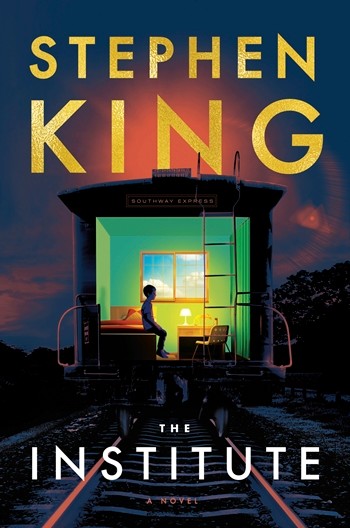
The kids are all right again, in Stephen King’s world.
Not since part one of “It” or his short story “The Body,” which became the “Stand by Me” film, has King based a story almost entirely around the lives and fears of young people.
The protagonist of “The Institute” is a hyper-intelligent 12-year-old named Luke Ellis. “Your basic good boy, doing what he was told,” King writes, “the guy who went out of his way to be social so people wouldn’t think he was a weirdo as well as a brainiac.” Snatched from his Minneapolis bed one night, Luke wakes up in a replica of his room with a few details missing. One of the giveaways? His collectible “Wings for Willkie” 1940 presidential button is missing from inside the cup of his Little League trophy.
Just pages later Luke is face-to-face with the villains of King’s story, a buttoned-up Mrs. Sigsby (we later learn her first name is Julia and she’s the chief administrator of the Institute) “wearing a tailored DVF business suit that did not disguise her beyond-lean build,” and Dr. Hendricks, “with his protruding front teeth and extreme height,” earning him the nickname “Donkey Kong.”
To say any more about what the Institute is or what happens to the gifted children imprisoned there would spoil the story, but it’s classic King. The best scenes in the first half of the book are when the kids are talking with each other, trying to figure out where they are, why they’re there, and eventually what to do about it. King has always had a great ear for childish conversation:
“Have we been kidnapped?” Luke asks his new friends.
“Well, duh,” replies George.
“Because every now and then I walk into a room and the door closes behind me?”
“Well, if they were grabbing people for their good looks, Iris and Sha wouldn’t be here,” says George, as Kalisha chimes in with, “Dinkleballs.”
The second half of the book hinges on the kindness of a couple of adults as Luke begins to figure out what’s happening to him and his friends. King fleshes out the supporting characters nicely and there’s a “Rocky vs. Drago” feel to it as you really begin to root for the kids and their sympathetic grown-ups.
Anyone who avoids King because they don’t like “horror” novels will be safe reading this one. It’s more mystery than horror, with the evil concentrated on inhumanity. There’s no bloody gore or supernatural forces, just adults treating children horribly. As the book climaxes and then reaches its resolution, you’ll have to decide for yourself if the good or the bad guys win. (AP)
 |
 |
 |





